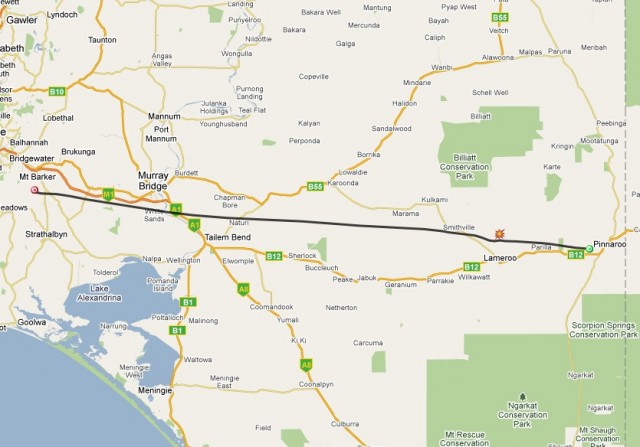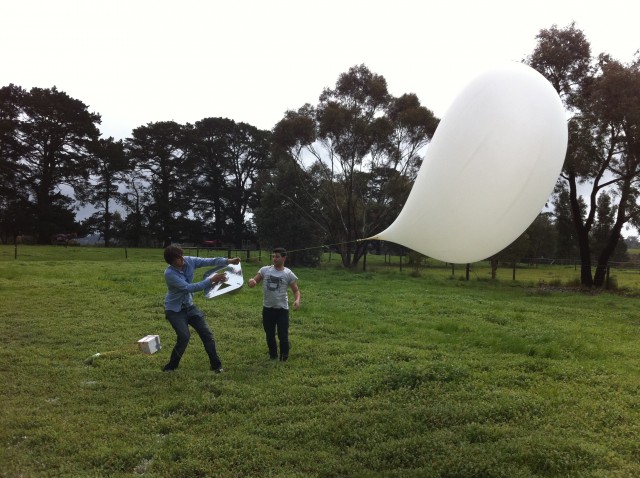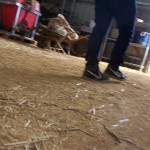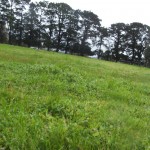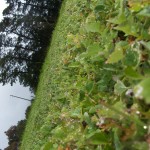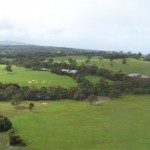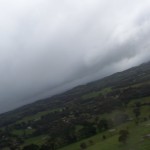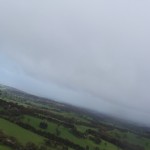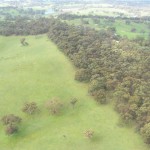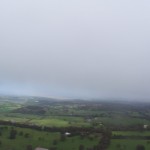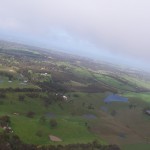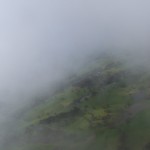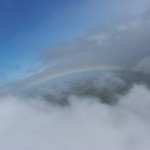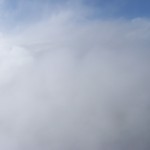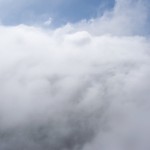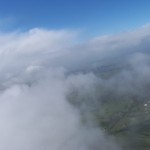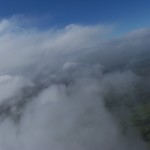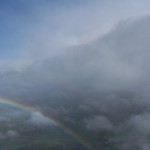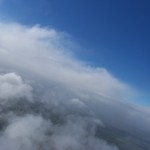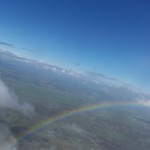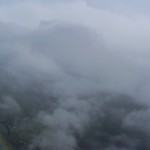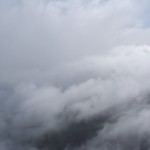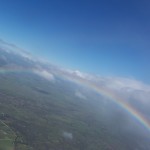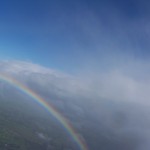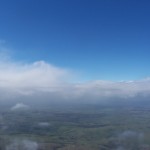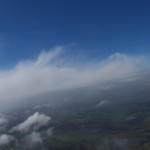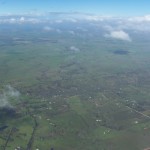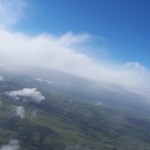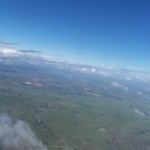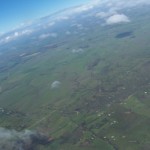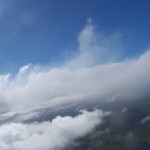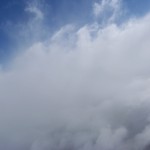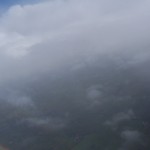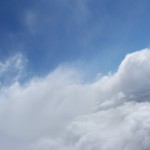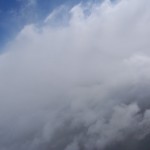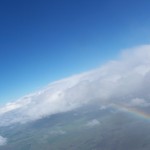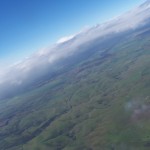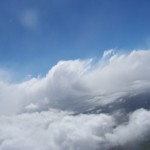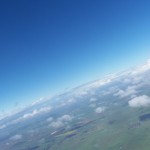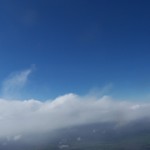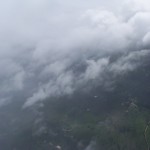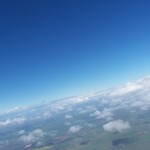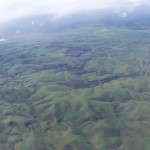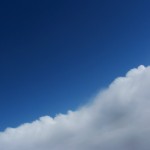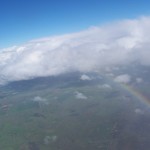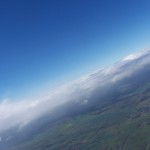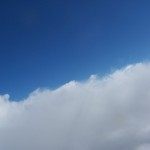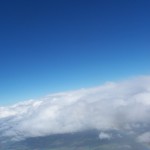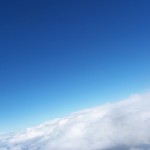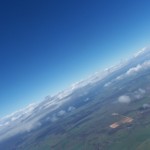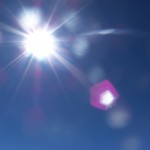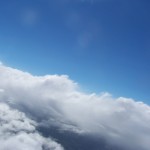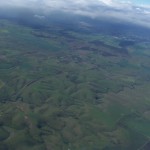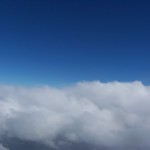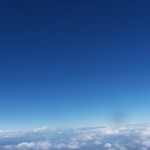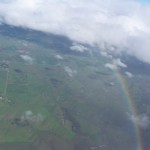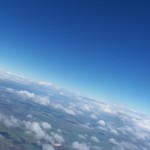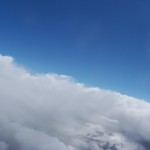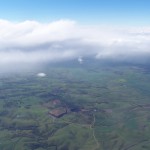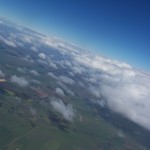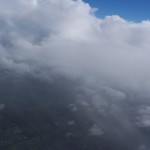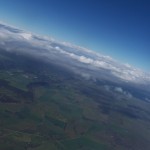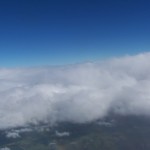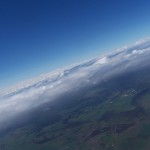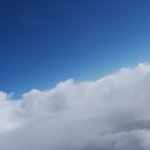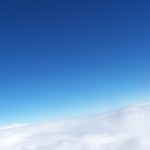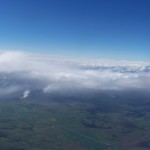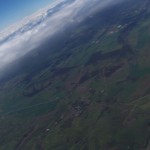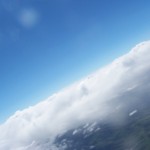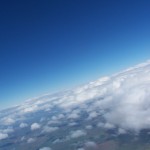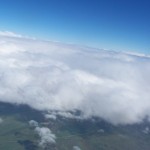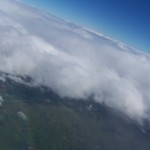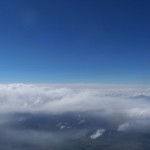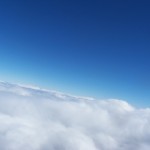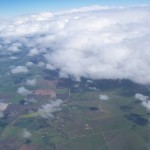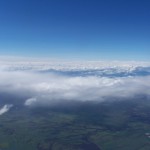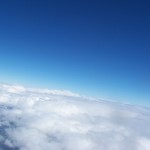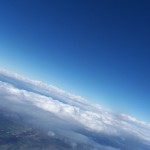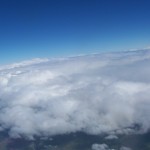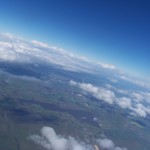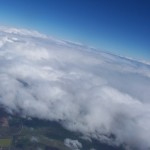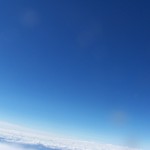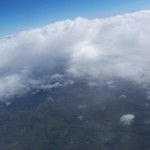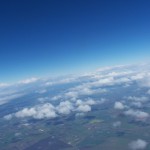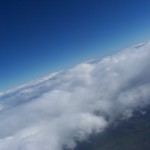Horus 5
Technical information:
| Launch date | 25/8/2010, 12:30pm |
| Landing date | 25/8/2010, 14:35pm |
| Flight duration | ~ 2 hours |
| Launch site | -35.1276, 138.8477 |
| Landing site | -35.254,140.9971 |
| Flight path | Web, KMZ |
| Distance travelled |
196.3 km |
| Maximum altitude | 31,180 m |
| Average ascent rate | 5.5 m/s |
| Impact speed | 12 m/s (43 km/h) |
| Payload weight | 900g |
| Flight computer | Arduino Duemilanove |
| GPS module | Falcom FSA03 (failed prior to launch) |
| Radio transmitter | Radiometrix NTX2 25mw |
| Camera | Kodak Easyshare Z700 |
| Telemetry | 100 baud RTTY, CRC16 checksum |
| Tracking | Ground stations (distributed listener), 2 chase cars, web based tracker |
| Backup systems | Vaisala Radiosonde |
Details:
Horus 5 was a collaborative effort with the University of Sydney Rocketry Team - I'd worked with them in designing their payload, and they flew down to Adelaide to use our launch site & tracking gear.
Weather was not ideal on launch day, but time pressures meant that launch couldn't be postponed. Predicted landing site was approx 180km away from the launch site - this meant one car had to head towards the launch site in advance, so as to be in a position to catch the balloon when it came down.
Launch:
Launching was made difficult by driving rain and very strong winds - fortunately we were able to make use of the large stable at our launch site to inflate the balloon out of the wind. Had this not been available, launch would have almost certainly been impossible.
Once we had the balloon inflated, we set about assembling the payload, and waited for it to gain lock. Adrian and his crew (Brad + Gerard & Steve from USYD) set off to the predicted launch site, leaving Alan and I behind to launch the balloon once they were in position.
After about an hour of waiting, the payload GPS had still not acquired lock - telemetry was working perfectly, though the data was of little use without coordinate data. At this point we decided to test the camera and found that it was not working either!
A short while later (after some frantic soldering and hot glue-ing), the camera was back up and running - the triggering wires connected to the shutter button had come loose. Unfortunately the GPS module on the payload was a loss, having sustained some physical damage, possibly during payload assembly, so we decided to launch using our backup radiosonde for telemetry.
Getting the balloon out of the shed & into the paddock was quite tricky thanks to the strong winds - luckily there were 2 of us (plus someone taking photos!) to do this. As soon as we had a break in the wind & rain we let the payload go (narrowly missing a tree) & radioed Adrian to let him know the balloon was up.
Flight:
Unfortunately I didn't have an antenna on my car designed to recieve the radiosonde's telemetry, so this was handled by Adrian in his car. As we headed out to the landing site we received periodic updates from Adrian, relayed via Peter on HF in the Barossa Valley, as Adrian was out of radio repeater range at this stage.
Our previous speed record of 160km/h was shattered by this balloon, which reached a whopping 228 km/h in the jetstream - had we not sent Adrian ahead earlier, we would have had no chance of keeping up in the car.
Balloon burst was at ~31.2km, very close to the predicted altitude of 31km. The payload had been setup for a fast descent rate to reduce the amount of driving needed to retrieve it - once it burst, it was down quite quickly, landing in a field east of Pinnaroo, just over the Victorian border.
Adrian's chase team arrived shortly after landing, and we joined them sometime later to see the retrieved payload. By this stage everybody was pretty wet and cold, so it was time to make tracks for Adelaide, stopping in Tailem bend for some fuel (for both the cars and humans).
Photos:
The camera aboard the payload captured some great images - unfortunately it did stop working after an estimated 10km altitude. The reason for this is unknown - perhaps the strong winds forced some moisture into the camera and caused it to shut down. On recovery, the camera was turned on again, and seemed to be working once more.
